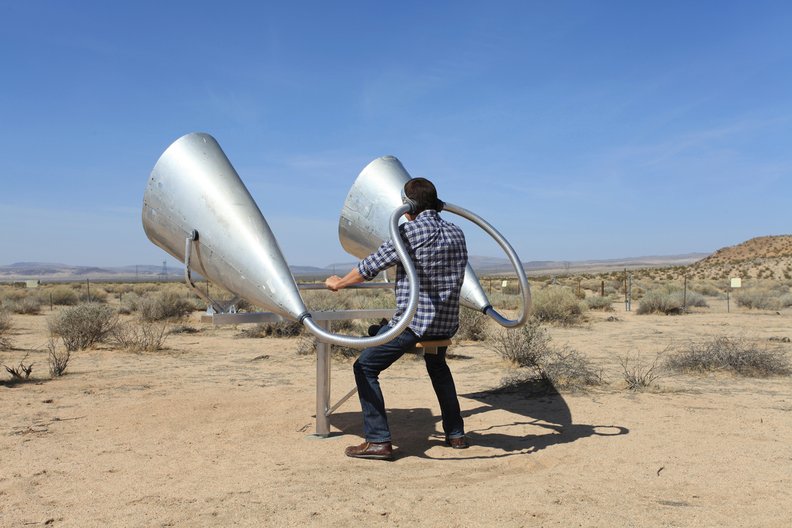
© Smout Allen
Having long admired the Centre for Land Use Interpretation (CLUI) in Los Angeles, Mark Smout, Laura Allen and Geoff Manaugh saw Venice Takeaway as an opportunity to investigate the organisation and its context.Founded in 1994, CLUI is a research and educational organisation that aims to understand and record the nature of human interaction with the earth’s surface. From its small base in Culver City, CLUI publishes books, conducts public tours and offers information and research resources through its library, archive and website. As an outcome of their research, the studio of Smout Allen, along with Manaugh, will launch the British Exploratory Land Archive. BELA will unite a variety of bodies and individuals to document a diverse range of sites, in the process centralising scattered catalogues and becoming an internationally useful organisation for recording land uses in the UK.
Interview with Smout Allen and Manaugh (BLDGBLOG)
Why did you want to be part of Venice Takeaway?
Venice Takeaway seemed like an interesting opportunity to raise awareness about issues in the worlds of architecture, landscape research and spatial design that extend beyond Britain. In the process, we saw an opportunity to join a team of other designers, writers, architects and researchers whose own work and methods could teach us something new.
Where did your idea come from?
All three of us are long-time fans of the Centre for Land Use Interpretation (CLUI) in the US. We have casually discussed what a similar institution in the UK might look like – and in particular, what sort of sites might be catalogued. This seemed like the perfect opportunity to pursue the idea of one central, nationwide repository of human land-use sites. We recognise that the UK already has a large number of organisations whose remit includes the cataloguing, preservation and/or public touring of unusual sites, whether for their historical, infrastructural, political or even subterranean interest. So our project explores a model for a different landscape taxonomy, one motivated by a desire to expand the bounds of what it means for an organisation of this kind to archive and explore sites of human intervention in the British landscape.
How are research and exploration important to your practice?
Research and exploration are both very important to us, although exploration deserves stronger emphasis. Our design work and various ongoing writing projects benefit directly from physical travel to sites and landscapes that – almost by definition, due to their remote, dynamic or inhospitable nature – resist the imposition of architecture as it is traditionally understood. These places – from seismic landscapes and sinkholes to permafrost and riverless islands – help to catalyse new design and writing projects, precisely because of the obstacles they present to settlement and mapping. Of course, targeted research also plays an important role in our work, and travel can be seen as its own form of research. However, sketching, modelling and writing often play a more vital or direct role in discovering a site’s spatial or narrative implications.